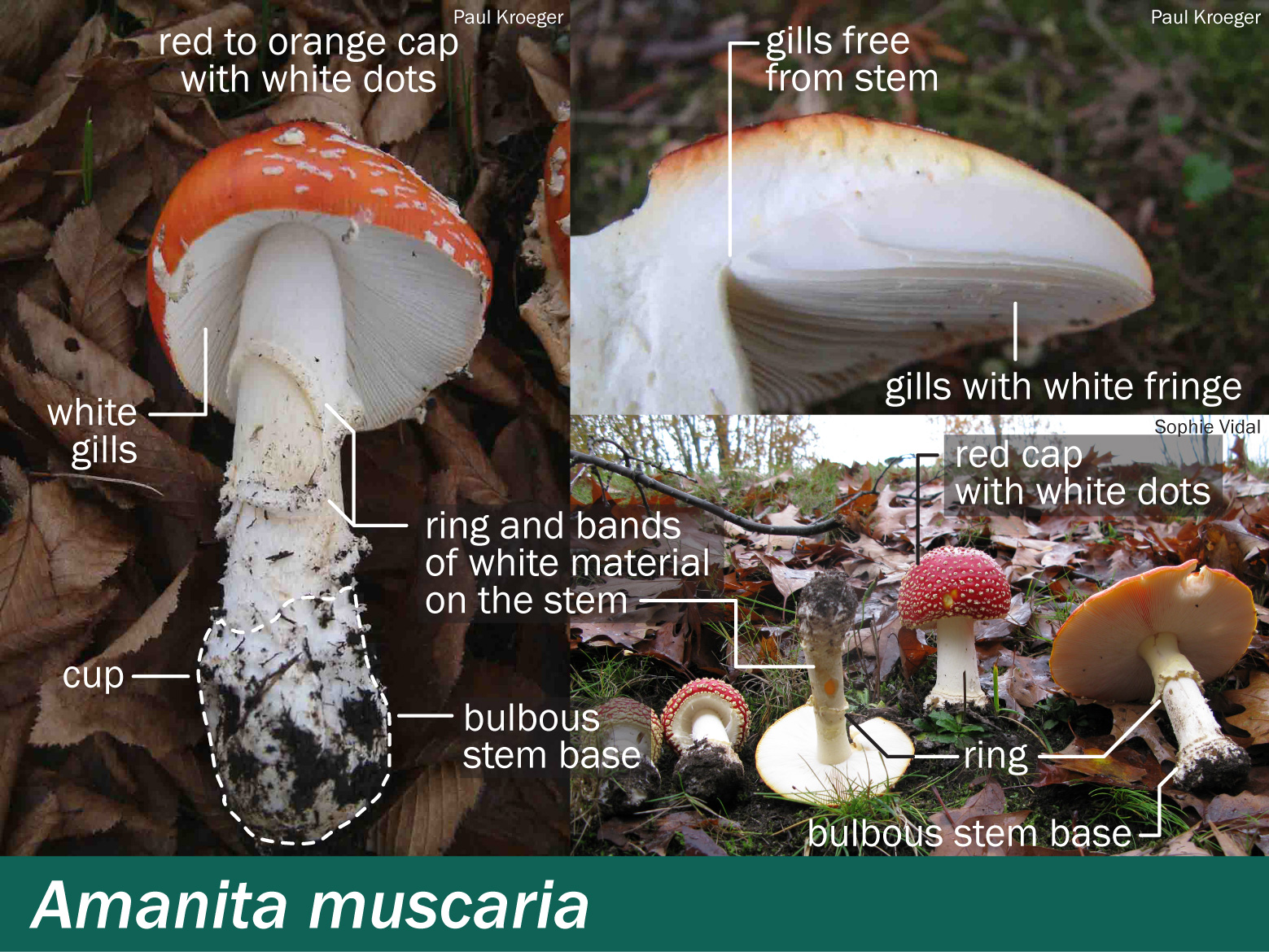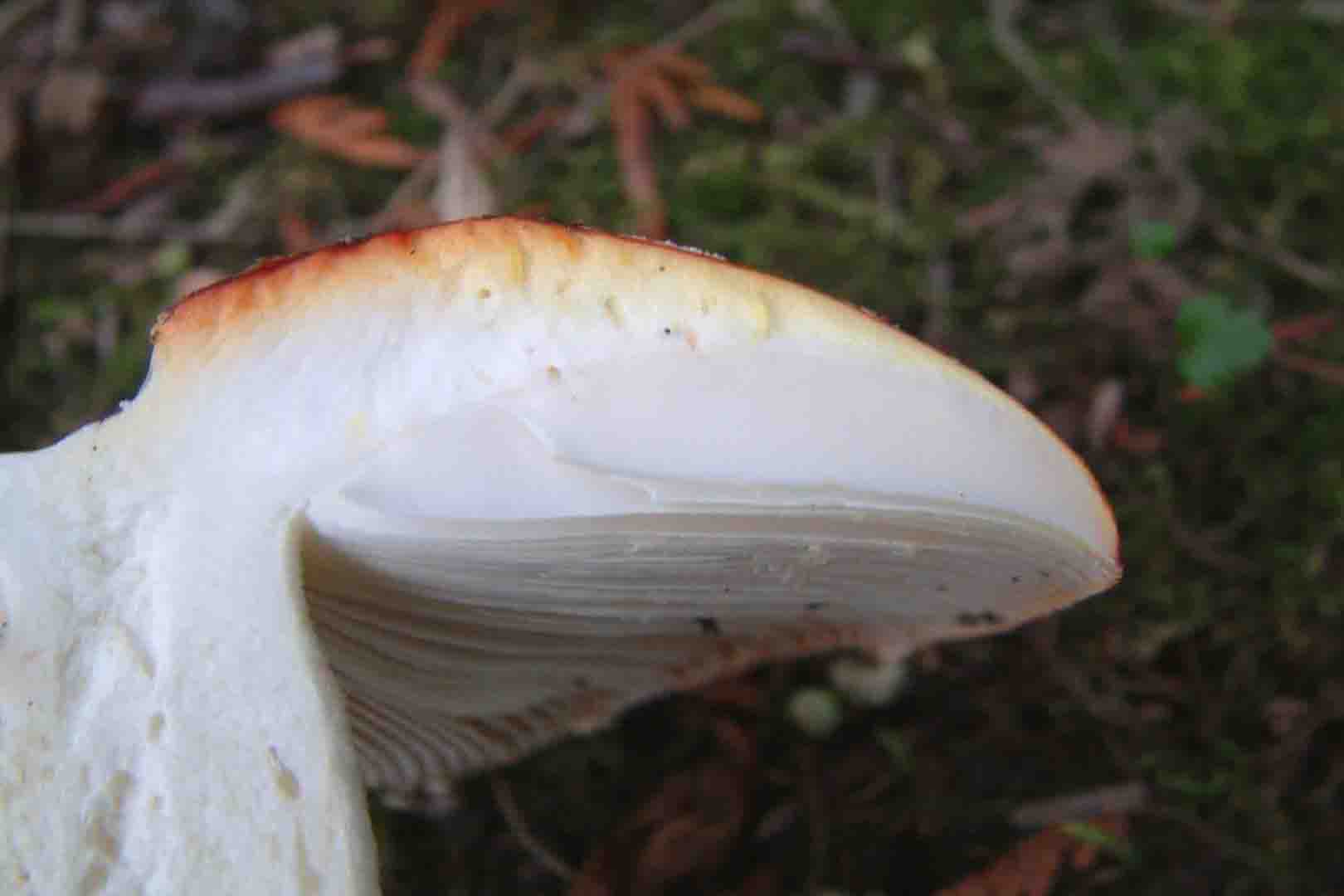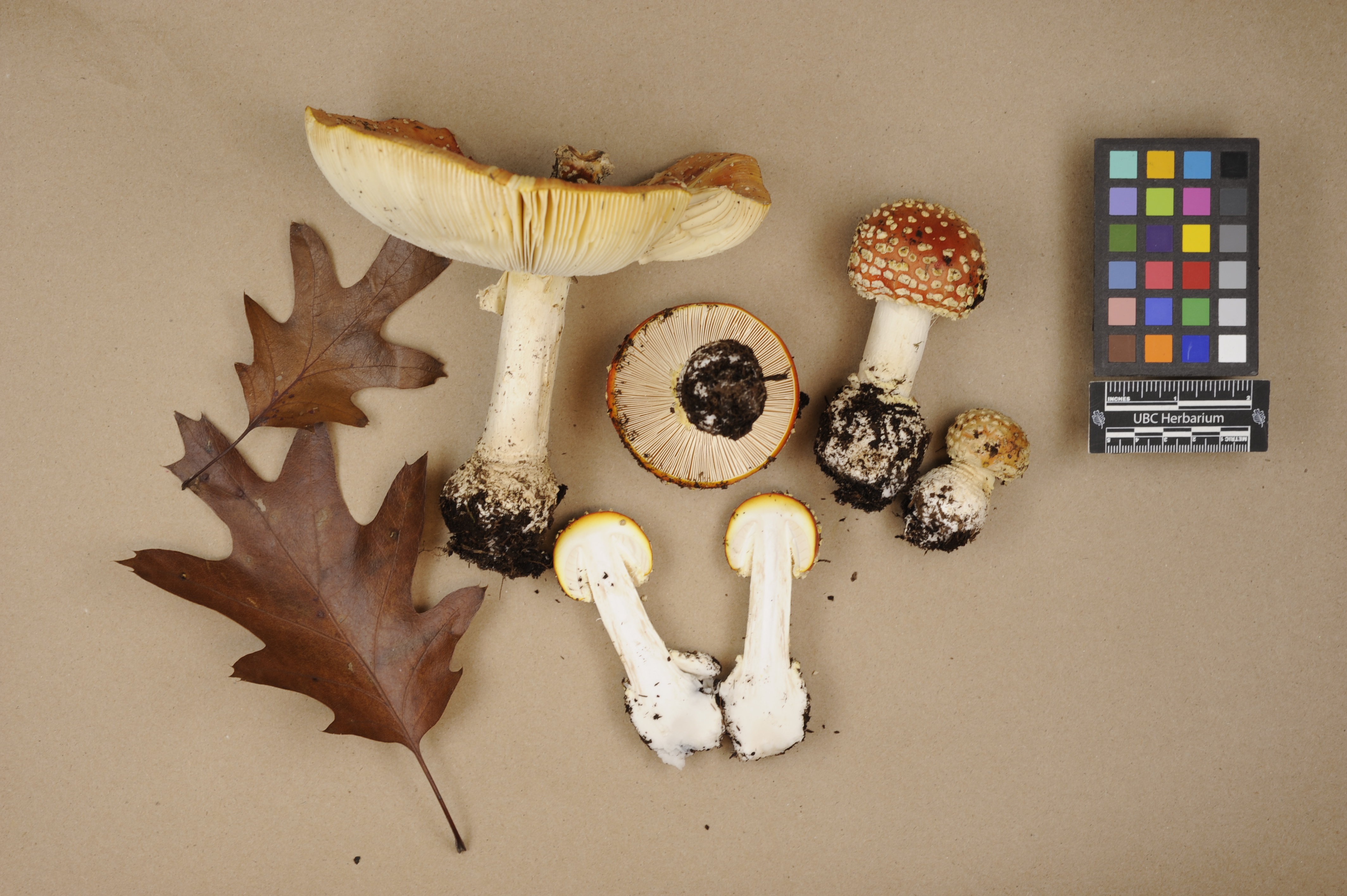Amanita muscaria — The fly agaric
The fly agaric is one of the most conspicuous and showy mushrooms--the classic toadstool. Fly agarics grow from the ground near both conifers and broadleaved trees and may be common and widespread in the late summer and autumn. Cap colour of these large and stout mushrooms is typically red but varies from almost white through yellow to orange or even brown.
Odour: Not distinctive.
Cap: 5–20 (–25) cm in diameter, rounded when young and then expanding to become convex to almost flat. The colour ranges from pale yellow to brown but is often bright red or scarlet when young, fading towards the margin to orange or yellowish. The surface is smooth and can be a bit viscid when wet. The margin becomes distinctly radially grooved. The cap has scattered to dense pyramidal warts of whitish, cream or slightly yellowish veil material, aptly described as looking like “cottage cheese”. These warts wipe off easily by hand or with rain. The flesh is white and does not stain when cut or bruised.
Gills: White and crowded and free or narrowly attached to the stem. The edges of the gills often have a powdery or granular fringe.
Stem: 7–20 cm tall and 1.5–4 cm wide, tapering towards the top, with an expanded or bulbous base, white in colour.
Ring or veil: A large, well-developed ring connects the young cap's margin to the stem. As the cap expands, the ring is released from the cap's margin and hangs like a skirt from the stem, smooth on its upper side and often with a thick cream to yellowish edge.
Cup (volva): The cup is thick and leaves broken horizontal or diagonal bands and ridges of loose, cottony, white to yellowish-cream material on the lower stem.
Spores: 9–13 x 6.5–8.5 μm, broadly ellipsoid to elongate, smooth, thin-walled and hyaline, non-amyloid (not blue in Melzer's iodine solution).
Habitat: Growing from the ground, common in cities under broad-leaved trees including oaks (Quercus spp.) and birches (Betula spp.) but also in coniferous and mixed forests; ectomycorrhizal.
Geographical range1: The fly agaric is in fact a species complex4. It is widely distributed across the Northern Hemisphere. In the Southern Hemisphere, it has been introduced with its host trees5,6. The geographical distributions of the individual component species within the fly agaric species complex are still unclear.
The several colour forms of the fly agaric had been named formally as varieties but molecular data unfortunately did not support neat classification by colour characteristics. Instead, our western North American fly agarics represent at least three different species that do not correlate to colour forms or the named varieties.
Toxins: Isoxazole compounds called ibotenic acid, muscimol, and muscazone. Small amounts of muscarine may also be present.
Symptoms8,9: Time of onset 30 min – 2 hours after ingestion. Common symptoms include disorientation, muscle spasms, disturbances in vision or perception of sound or of time, and gastrointestinal distress, often followed by drowsiness and a deep sleep lasting several hours. Recovery is usually complete after 24 hours.
Treatment: Contact your regional Poison Control Centre if you or someone you know is ill after eating any Amanita species. Poison centres provide free, expert medical advice 24 hours a day, seven days a week. If possible, save the mushrooms or some of the leftover food containing the mushrooms to help confirm identification.
Poison Control:
British Columbia: 604-682-5050 or 1-800-567-8911.
United States (WA, OR, ID): 1-800-222-1222.



